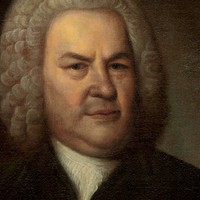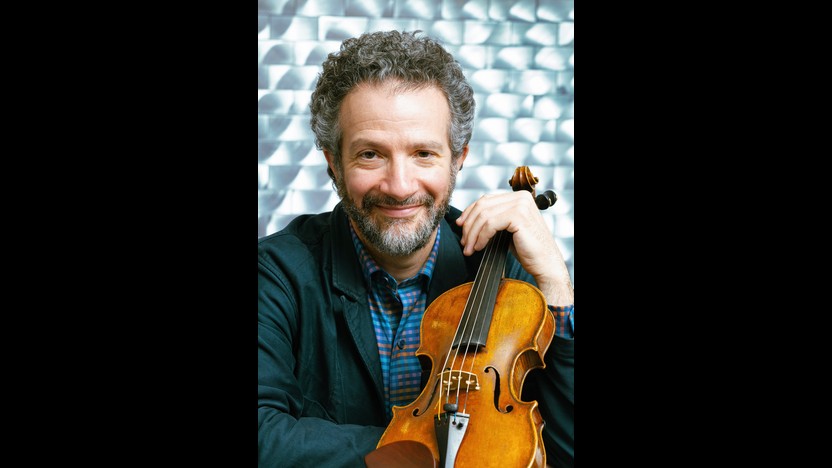Details

Johann Sebastian Bach
Violin Concerto No. 2 in E Major
Bach probably composed his two extant violin concertos around 1730, not long after he agreed to lead the Collegium Musicum in Leipzig. This talented amateur group gave weekly performances, often in the informal atmosphere of a coffeehouse, providing Bach an outlet for secular music that would not have entered his primary duties preparing music for church services. The violin concertos in A minor and E major were among the works that Bach recast in the late-1730s as keyboard concertos, also intended for the Collegium Musicum. The six keyboard concertos provide evidence that there were likely more concertos for violin, but only the two solo concertos and a double violin concerto in D minor have survived.
Bach borrowed his template for the violin concertos from earlier Italian composers, especially Vivaldi. The E-major Concerto begins with three chords and a pause—a stock opening that can be found in some two dozen of Vivaldi’s concertos—but the ensuing treatment is classic Bach. The recognizable figure of a rising triad spread across three steady beats cascades from voice to voice and passes through a range of keys, making its most striking arrival in the ominous key of C-sharp minor. The journey to that contrasting key area proves even more significant when it turns out to be the home key of the Adagio, a poignant lament the concentrates the richest countermelodies in the lower strings. The Allegro assai finale adheres to the classic ritornello format, in which tutti statements return after each exploratory episode from the soloist.
Aaron Grad ©2013
 Watch Video
Watch Video
Johann Sebastian Bach
Brandenburg Concerto No. 5
(Duration: 21 min)
Johann Sebastian Bach’s Fifth Brandenburg Concerto features flute, violin and harpsichord as soloists. Such a trio was a common chamber music ensemble at the time, playing works known as trio sonatas. What is remarkable about this concerto is that the harpsichord functions as more than a supporting accompanist; it contributes whirlwind solo lines, and it issues a monster of a cadenza at the end of the first movement. This use of the harpsichord as a solo instrument foreshadows the seminal keyboard concertos Bach later assembled in Leipzig.
The middle movement, labeled Affettuoso (“with feeling”), presents the soloists without the accompanying strings. Unlike a trio sonata, in which the harpsichord would typically have just a bass line with the right-hand harmonies filled in ad libitum, the harpsichordist’s right hand plays its own melodic line that intermingles with the flute and violin. In the finale, a fugue reinforces the equal footing of the voices. The violin and flute take the first two entrances, and the harpsichord jumps in with the third and fourth voices of the fugue.
Aaron Grad ©2021
 Watch Video
Watch Video
Johann Sebastian Bach
Brandenburg Concerto No. 3
(Duration: 11 min)
Instead of the typical concerto grosso setup of a solo group within the orchestra, Johann Sebastian Bach’s Third Brandenburg Concerto treats all members of the ensemble as soloists, with independent lines for three violins, three violas and three cellos supported by the basso continuo accompaniment. The equitable distribution of the material is especially clear in the first movement, in which the primary motive — a three-note figure that drops to the lower neighbor note and then returns to the starting pitch — cascades through the different voices.
The central Adagio movement consists simply of two linking chords, sometimes elaborated by an improvised cadenza. The concerto closes with a barreling Allegro finale, its tempo and character matching the reeling gigues that conclude most of Bach’s dance suites.
Aaron Grad ©2021
 Listen to Audio
Listen to Audio
Johann Sebastian Bach
Orchestral Suite No. 1 in C
From 1723 until his death in 1750, Johann Sebastian Bach held the demanding position of Thomaskantor, directing music for the principal churches of Leipzig and training the young choristers under his care. Somehow Bach also found the time to direct the Collegium Musicum, an amateur ensemble founded by Georg Philipp Telemann back when he was a student in Leipzig. With most concerts held at a coffee house, the Collegium Musicum provided Bach a space where he could present secular music not fit for church, including the four surviving Orchestral Suites inspired by French dance music.
Bach probably composed the Orchestral Suite No. 1 during his early years in Leipzig, perhaps in 1725. Suites in the French style had become fashionable in Germany, where such a work would have been described as an Ouverture (to use the French spelling), taking the name from the substantial opening movement. As was customary, this one begins with slow dotted rhythms that establish an air of gravitas, linked to a fast fugal section.
The dances that constitute the remainder of the suite each adopt the usual binary structure, consisting of two repeated sections. All but the Courante and Forlane come in sets of linked pairs organized in a da capo format, meaning that the first dance returns for a final pass after the second concludes. In the Forlane — the only movement with that title in Bach’s surviving output — the pastoral oboe melody, droning bass and slurred accompaniment make for a memorable effect. Instead of ending with a typical gigue, the suite closes with a pair of Passepieds, another rare form found only four times in Bach’s music. This fast spin on a minuet reuses the same melody for the second part, dropping the tune to a lower octave and adding a dizzying counter-line from the oboes.
Aaron Grad ©2024
About This Program
This unconducted program features four of Bach’s most cherished masterpieces, including two of his beloved Brandenburg Concertos. At the center of the program is the composer’s Second Violin Concerto, featuring SPCO Concertmaster Steven Copes as soloist. Continuing our season-long exploration of Bach’s complete Orchestral Suites, this program closes with the Orchestral Suite No. 1.

